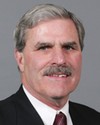Madam Speaker, I thank my colleague from Mississauga South. I welcome this opportunity to rise in this House to speak on Bill C-57.
We are well aware of just how important the financial services sector is to the Canadian economy, and that of Toronto in particular, where my riding is located. The steps taken by our government in recent years attest to that fact. We have passed legislation ensuring that financial institutions have the modern regulatory framework they need in order to be competitive in today's global economy. Bill C-57 builds on these initiatives.
This bill builds on the financial services restructuring package that was introduced and passed by Parliament in 2000. I think it was the largest piece of legislation that was introduced and passed by Parliament dealing with the financial sector in Canada and how it was going to be structured or allowed to structure itself. Of course, a major piece of that legislation dealt with bank merger guidelines.
At the time there were governance issues affecting the major banks and financial institutions that were not dealt with, so this bill addresses some of those governance issues. For example, it brings the legislation up to date to recognize the fact that the major insurance companies were demutualized. It also deals with the issues around deposit insurance and aligns this act with some of the features of the Canada Business Corporations Act, for example, the question of the defence of due diligence by directors.
In fact, my first private member's bill in 1997 dealt with giving directors the defence of due diligence for corporations incorporated under the Canada Business Corporations Act. It was necessary I felt, and in fact it was incorporated later into the Canada Business Corporations Act, that directors would be given the defence of due diligence.
What that means is that if directors of companies asked all the right questions, demanded certain information in certain ways and did everything that was reasonable for directors to do, then they would not be held liable if something occurred subsequently which created problems for the corporation. I think it is fair for directors to have that defence because directors come together for board meetings maybe once a month. It is management that is primarily responsible for running the company.
For example, if a company was building a big plant and the director asked about the impact on the environment by the plant, and wanted an independent study conducted by environmental engineers, once the study was conducted and the environmental engineers said the plant would create no environmental difficulties, then at that point in time I think the director has discharged his or her responsibility. Subsequently, if the plant creates some environmental problems, then I do not think the director should be held liable. That is what the change to the Canada Business Corporations Act did and that is what the changes to Bill C-57 contemplate as one of the pieces with respect to the financial institutions legislation.
Corporate governance is one of those items that has received more attention in the last few years around the world, particularly with the advent of the Enron scandal in the United States and WorldCom. We have not been immune in Canada either. We have had some difficulties with corporate governance at Nortel. I cannot remember the company name, but there was the Drabinsky theatre group that got into some problems.
Corporate governance is a very topical matter and concerns, of course, a lot of citizens who own shares in companies, pension plans and mutual funds. In fact, many Canadians hold shares in companies in Canada through either mutual funds or pension plans or hold those shares directly. It is important to them that corporate governance is sound.
That is why, following the Enron and WorldCom situations in the United States, members on this side reacted. I do not know about members on the other side as I do not think they spend much time worrying about things like this. They are more interested in a $1.50 pack of gum that Mr. Dingwall bought. Nonetheless, corporate governance is a very important matter because it affects the investments that many Canadians have made. Following Enron and WorldCom, the United States, through its Congress, brought in legislation referred to as Sarbanes-Oxley that basically brought in tough corporate governance rules for companies.
The reality is that the Sarbanes-Oxley legislation, while well intentioned, has had some mixed reviews, but it did raise the question, certainly on this side of the House, of what we should be doing in Canada, so we struck a caucus committee, which I was honoured to chair, and we looked at corporate governance in Canada.
Canada has a complicated quilt of different jurisdictions and different organizations that get involved in corporate governance. We have the Ontario Securities Commission. We have organizations like the Canadian Public Accountability Board, which was set up just two years ago to give oversight over auditing firms, so that auditing firms are held accountable to the audit reports that they issue. Many investors rely on these audit reports because if they give companies a clean bill of health, then someone investing in those companies has a right to expect that they have a clean bill of health. The Canadian Public Accountability Board was set up to monitor the performance of auditing firms.
We also have the Canada Business Corporations Act. I forget the exact statistic but something like 30% to 40% of the public companies in Canada are incorporated under the Canada Business Corporations Act. It is a large number of companies. It does not represent all companies, but it is quite comprehensive.
Therefore, our view, coming out of that review, was that the Canada Business Corporations Act could be used and should be used as a benchmark, as a worldclass standard that should be implemented. This is an area that the Government of Canada can control very directly. Through Parliament, we can pass legislation that sets the corporate governance rules for corporations incorporated under the Canada Business Corporations Act.
What does corporate governance consider? It deals with a whole host of things. It deals with things such as the composition of a board of directors and whether there should be independent boards of directors. We saw problems, for example with Nabisco, which was a big fiasco years ago where the CEO hand-picked all the members of the board of directors and paid them $40,000 U.S. a year. They would go to fancy meetings and so on. When the executive made presentations to the board of directors, they were all hand-picked buddies of the CEO and chairman, and nothing really came under close scrutiny. There are issues around the independence of the members of the board.
There is the question, which particularly comes up in the context of financial institutions in Canada, of what the requirements or limitations are in terms of the participation of foreign directors on boards of directors. Should a bank such as the Bank of Montreal or an insurance company such as Sun Life be allowed to have unfettered access to members of their boards who are U.S. citizens, for example, as opposed to Canadian citizens?
There are issues whether the role of the chief executive officer should be split from the role of chairman of the corporation, so that the chair could be independent and provide more oversight over the CEO and his or her executive team.
There are issues around executive compensation, stock option plans and the transparency of those. One of the problems or challenges we had was public companies' quarterly profits being reported and those profits really determining the share price of a company to a large extent. The management of companies is under huge pressure to keep earnings per share on the rise. That sometimes puts officers of a company in a position where they might compromise their ethical standards, frankly.
We saw that in a big company in the United States, Xerox or one of those, that simply capitalized a whole range of expenses that should have been expensed. Of course, if those costs had been expensed, it would have had an impact on earnings per share. Its share price would have been affected, so they treated them as assets rather than expenses. Even the most cursory examination by an accountant would have or should have revealed that those were not assets, those were expenses.
With the pressures on management to perform in terms of earnings per share, we need to have complete transparency with respect to stock options, so that shareholders know that the executive of a company has certain incentives to see the share price increase. In this way shareholders know precisely what is going on.
There are issues about the handling of proxies for meetings, so that the executive and the management of a company do not dominate what happens at these meetings. There are a whole range of developments under corporate governance, but I am pleased to note that the Minister of Industry is conducting a review of the corporate governance under the Canada Business Corporations Act and I hope that he picks the best practices.
We have had some time now to learn from the experiences of other jurisdictions, looking at what the United States did and others, and consulting with the industry and other stakeholders to pick the best practices in terms of corporate governance and enshrine them in the Canada Business Corporations Act.
That would not impact every single company in Canada, but it will be the new benchmark. It will set the standard and the Government of Canada can take pride in that because it will protect investors, whether they are direct investors, big monied investors, or small investors through mutual funds, pension plans or the like.
There has been a great deal of press recently about the bank merger guidelines, whether the Minister of Finance will come out with the new bank merger guidelines. The financial sector legislation was enacted by this Parliament around 2000 set up a process for large bank mergers. It set up a role for the Standing Committee on Finance of the House of Commons and the Senate banking committee, so that those committees would be charged by Parliament to assess the public interest questions around major bank mergers. It was enshrined in Bill C-7.
The banks of course are looking for certain clarity around what a large bank merger would entail, what would be the appetite of the government to allow another bank merger. This is a vexing question because in Canada we know there is a large concentration of banks and further consolidation would raise some questions.
The bottom line is that if we were to allow another merger of two major banks, what would the benefit be to Canadian consumers and Canadian business? We know the benefit to the shareholders of major banks, to the boards of directors and all those with stock options. They would receive a benefit and that is fine. Profit is not a dirty word. However, we need to understand what the benefit would be to consumers in terms of choice, access to services, and would it enhance the ability of Canadians to do their banking? That is the question on the table.
Another issue that has been presented has to do with cross-pillar mergers. When the finance standing committee of the House of Commons dealt with large bank mergers and the public interest aspects of that, the committee did not really deal with the question of cross-pillar mergers. Cross-pillar mergers would entail the merger of a large bank with a major insurance company, for example, Sun Life merging with the Royal Bank of Canada.
There has been some discussion, pro and con, as to whether that would be a good thing or a bad thing. The empirical evidence would suggest that there is not a lot of synergy or appetite within those two different sectors. They have a different business culture, a different business model, but nonetheless, it is an important question because it allows a concentration of capital. It allows a company to have stronger capitalization.
This is one of the things that is important for banks because they are dealing in an international world. If their client is a Canadian company that is a multinational and wants to expand globally, the banks have to have the capital, the care and the capacity to do that kind of work. So, there is some interest there. That is a debate I am sure we will have maybe in the next Parliament, but it is an important question.
When the Minister of Finance comes out with his bank merger guidelines I hope he will ask the Standing Committee on Finance to examine the public interest aspects of cross-pillar mergers because that was not really dealt with in any detail by the finance committee. We focused mostly on large bank mergers.
As I said, this huge piece of the legislation did a number of things. It described the process under which large banks could come to government seeking a merger but it did much more than that. What it attempted to do was create more competition within the banking sector so it created greater opportunities for the credit union movement to grow and enlarge. It gave more opportunities for foreign banks to participate in the economy in Canada. It gave a lower threshold for start-ups of banks in Canada. It set up the consumer protection agency. It did a number of things, which is why it was such a large bill when it was presented to the House.
Not only does the House of Commons committee and the Senate banking committee look at the public interest aspects, but the Competition Bureau weighs in and makes a determination of whether a bank merger would create any anti-competitive types of situations. The Office of the Superintendent of Financial Institutions also makes a determination of whether a merger would create any issues around prudence and stability of the financial sector in Canada. Therefore it is quite a rigorous process.
One of the ironies is that if two major banks were to merge, the Competition Bureau would very likely say that there would have to be a divestiture of certain branches. Let us say, in the case of the Toronto-Dominion Bank and the Bank of Montreal, if they ended up with too many of their banks in a small town in Ontario and not enough of the other banks, the Royal Bank and CIBC for example and others, the Competition Bureau might say that now with this merger there is too much of a dominant position by that bank in that city or that region and it has to divest of certain branches.
This creates an interesting aspect. In the past this has always been seen as a negative in the sense that if they have to divest that means the people in that local community have less choice and they do not have the range of options that they might have had if the banks just stayed the way they were. There is clearly some truth to that.
In the last few years some of the smaller banks, Laurentian Bank, the National Bank and the credit union movement, have indicated very clearly that if the Competition Bureau indicates that a bank merger would require divestitures that they would be very interested in buying up those branches. The ironic twist is that we could end up with more competition in a regional market if we ended up with some of these smaller banks in those locations.
Therefore it is an important question and it is a vexing question and I am sure the next Parliament will deal with that.
However I am very happy to support this bill because it would bring the financial institutions legislation more in line with the Canada Business Corporations Act. It would provide the corporate governance requirements that we need. I hope down the road that there will be further enhancements to governance for banks that will be further aligned with the changes to the Canada Business Corporations Act that I certainly expect will be coming.


















